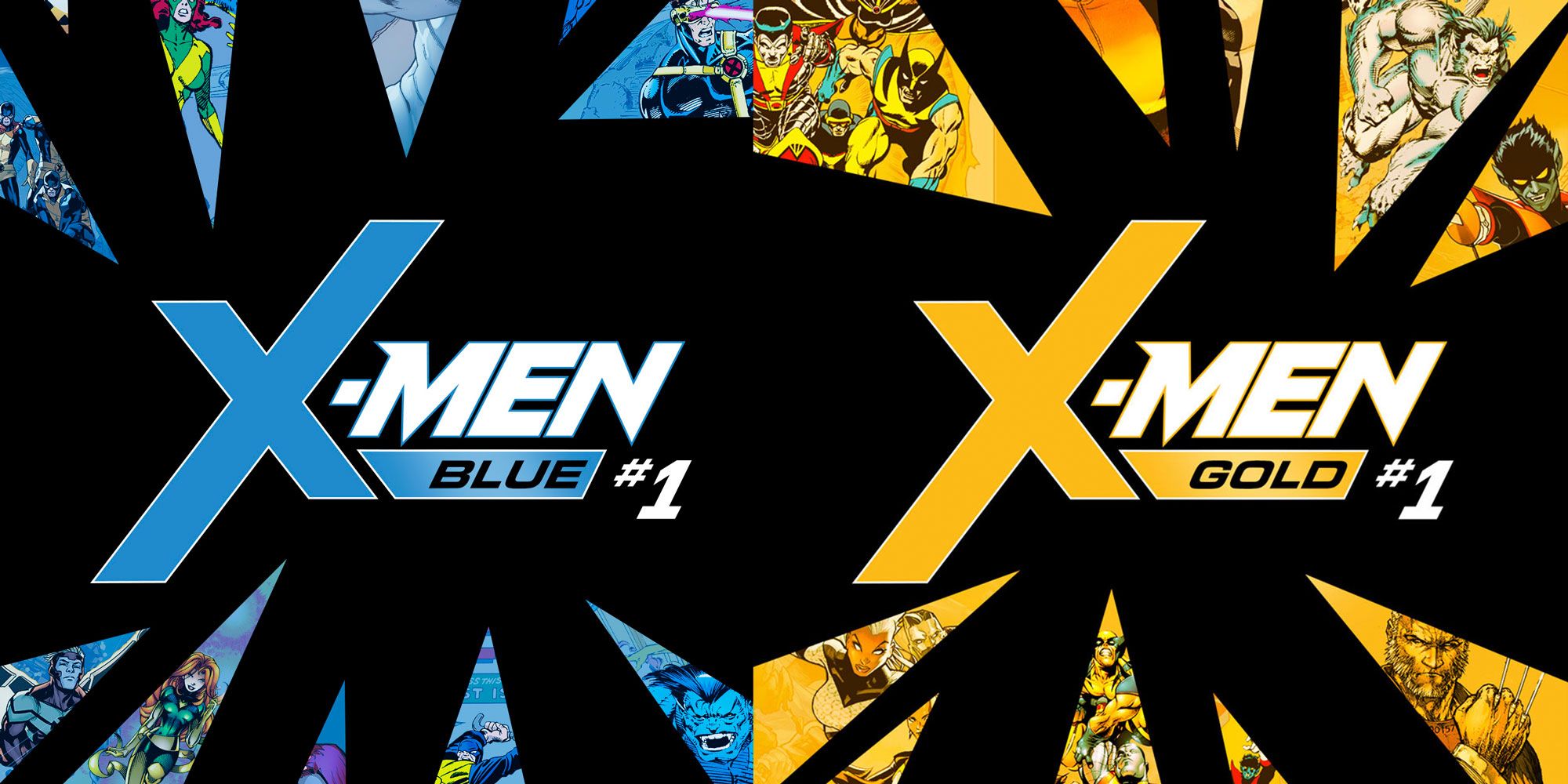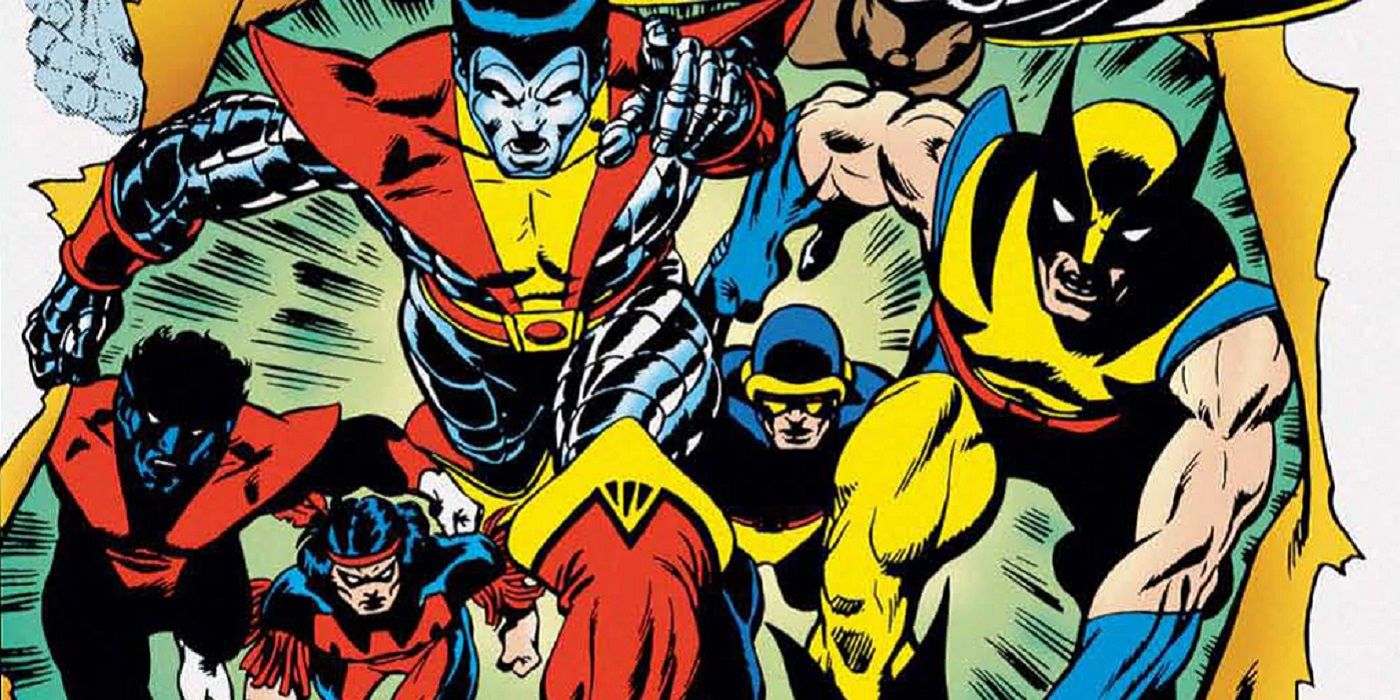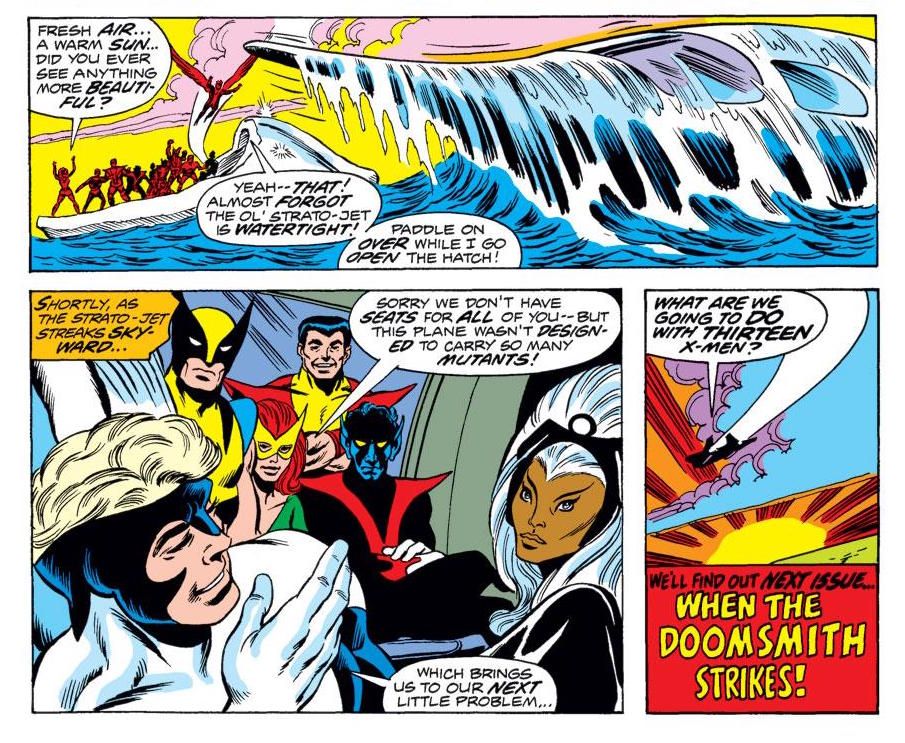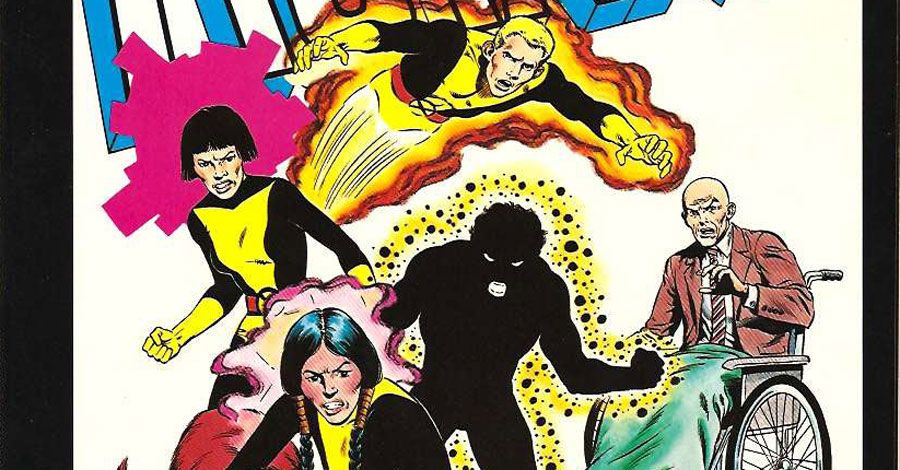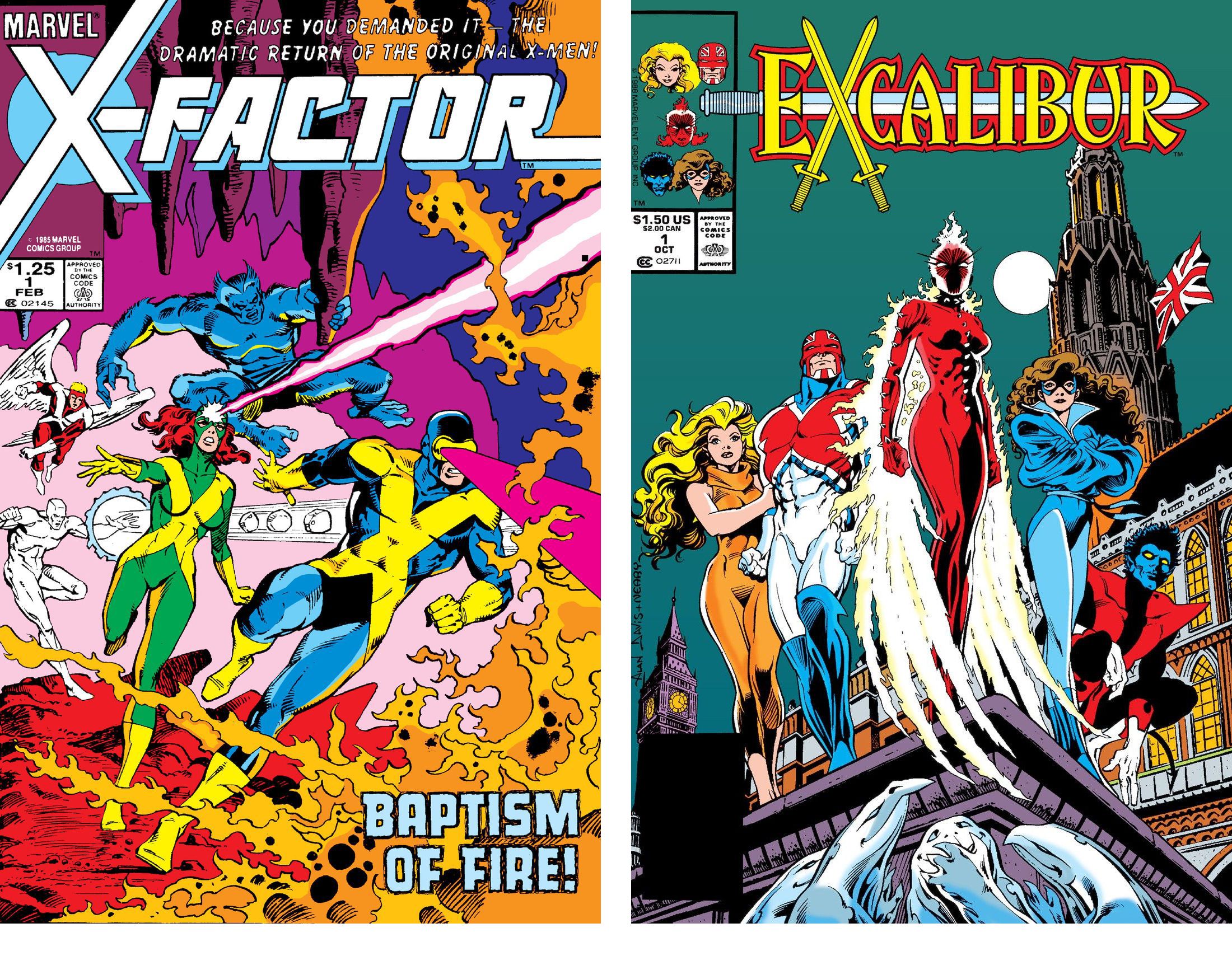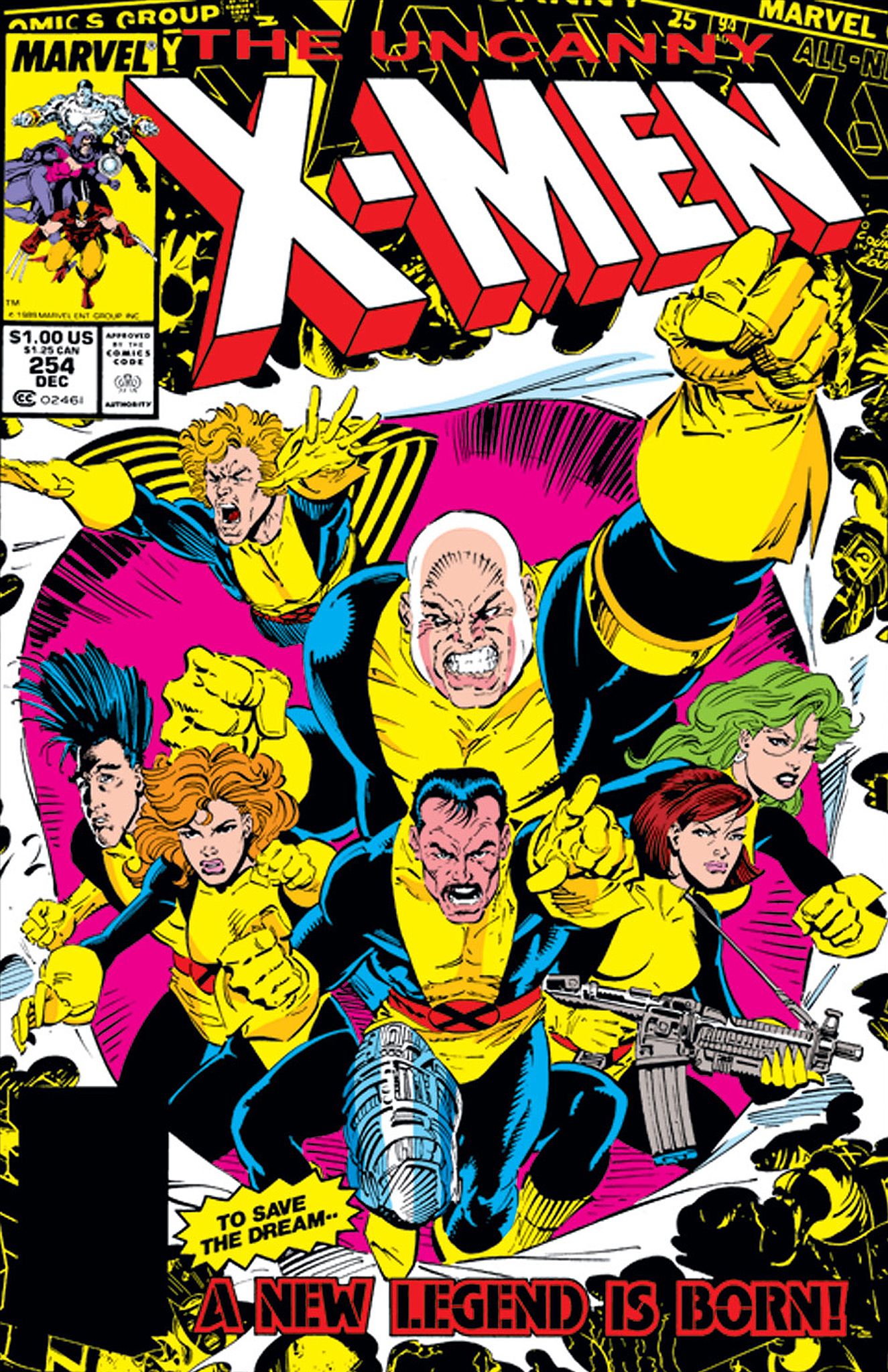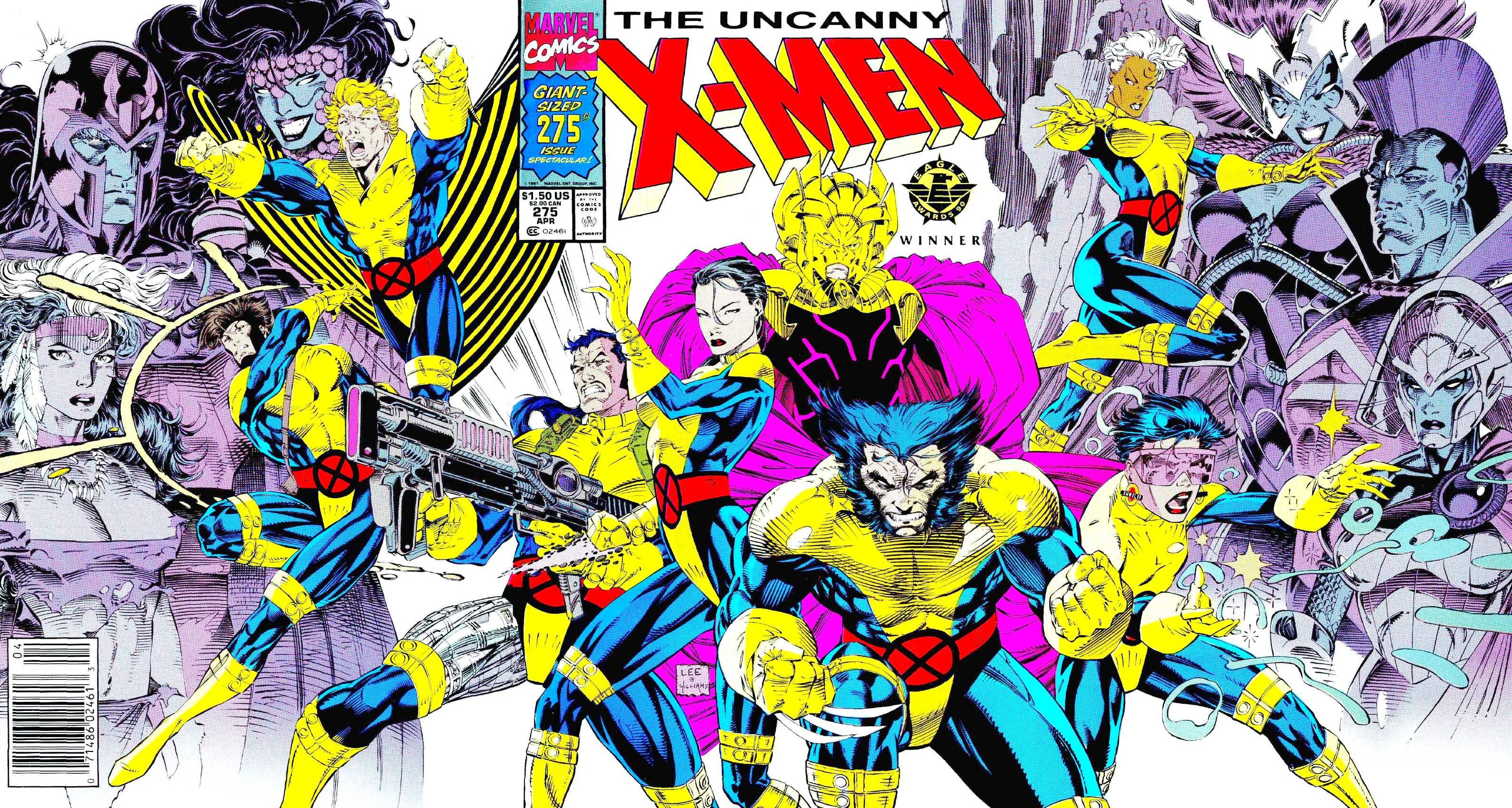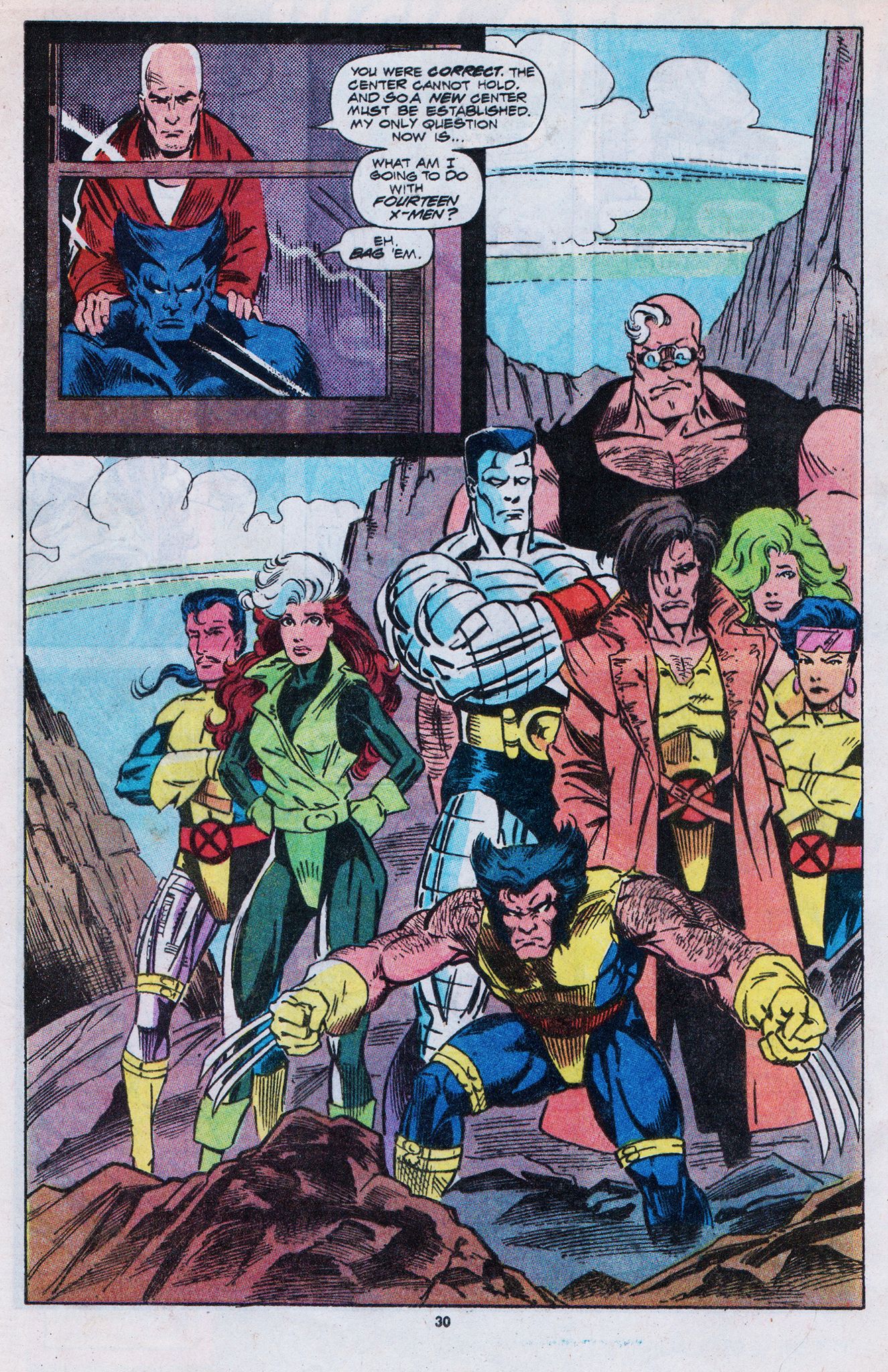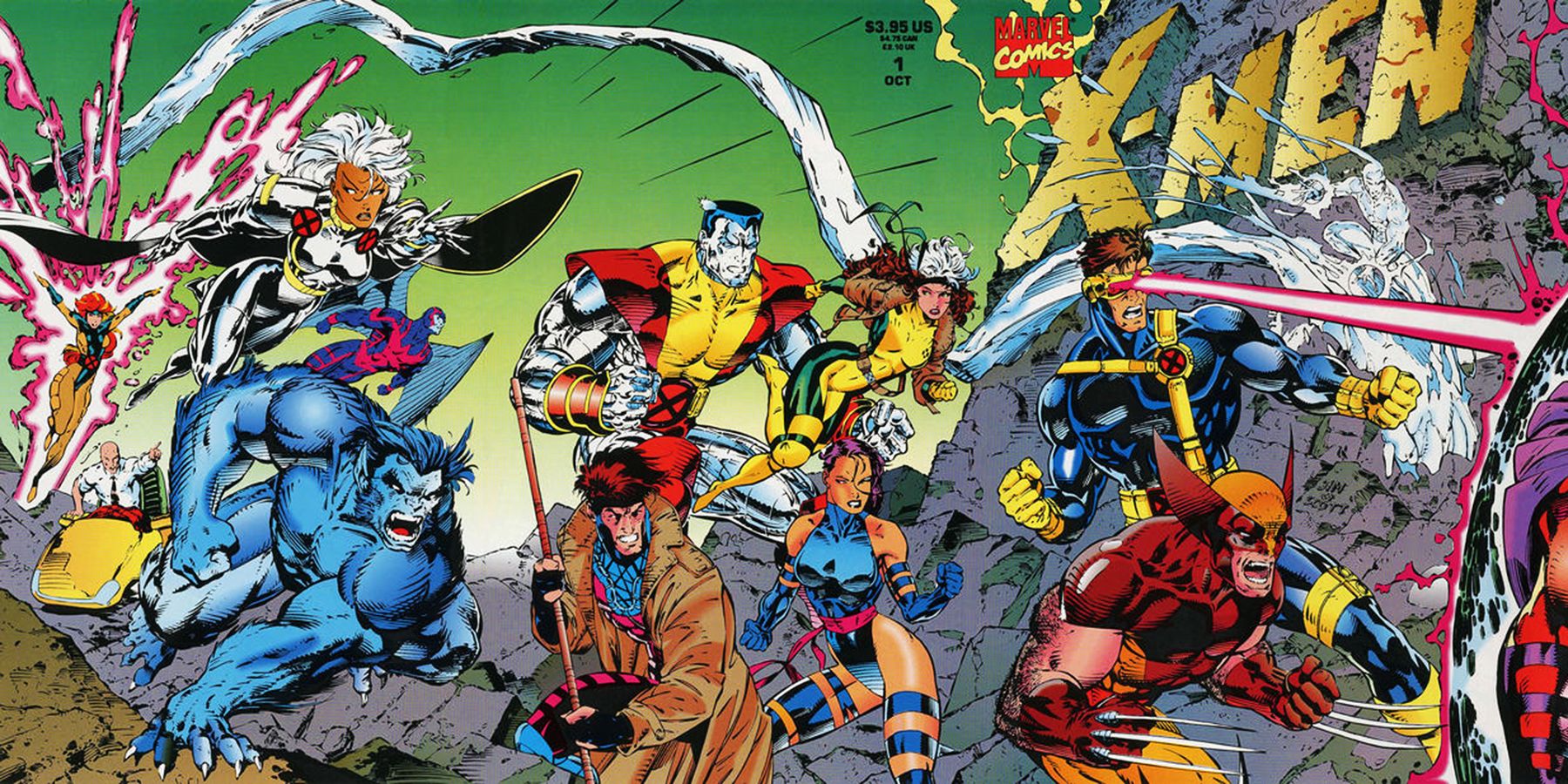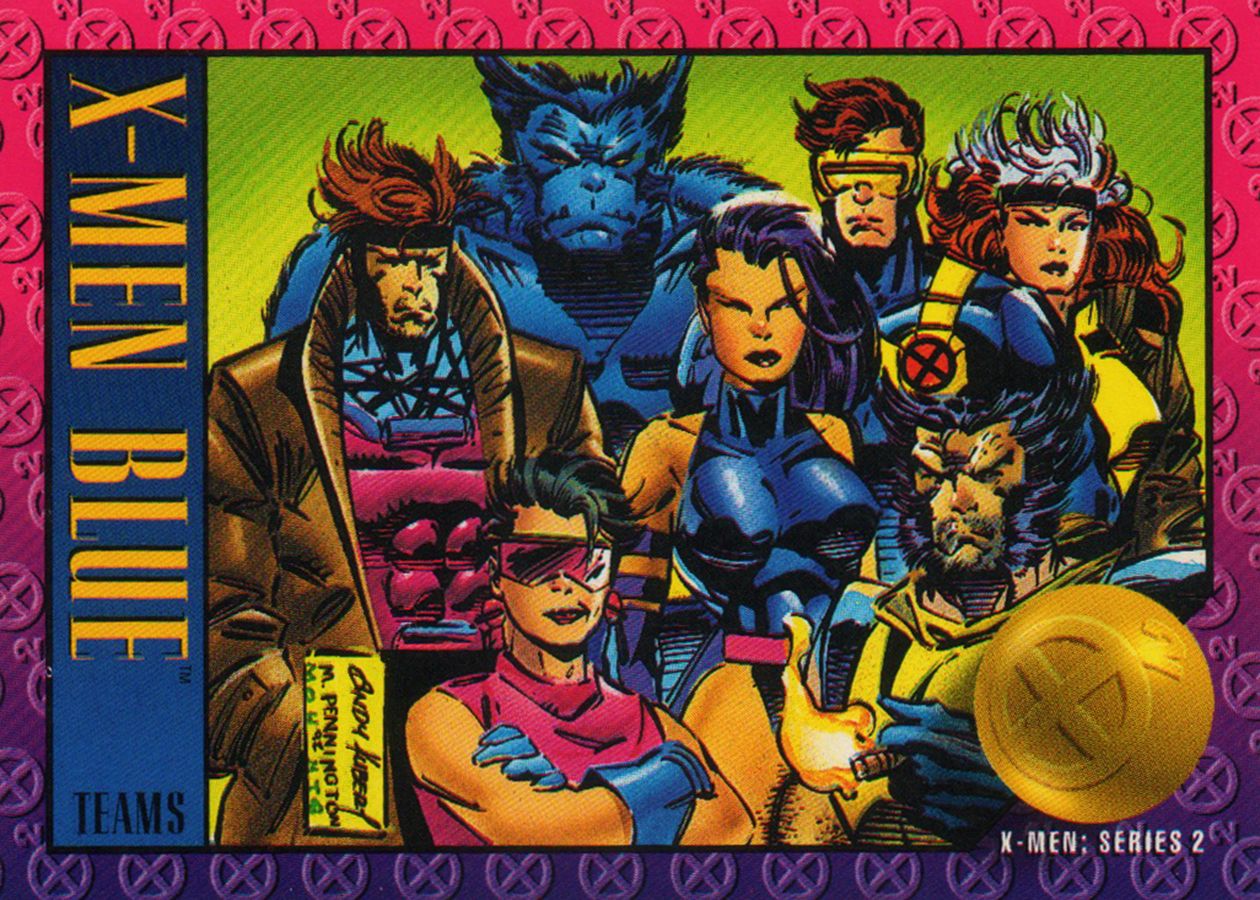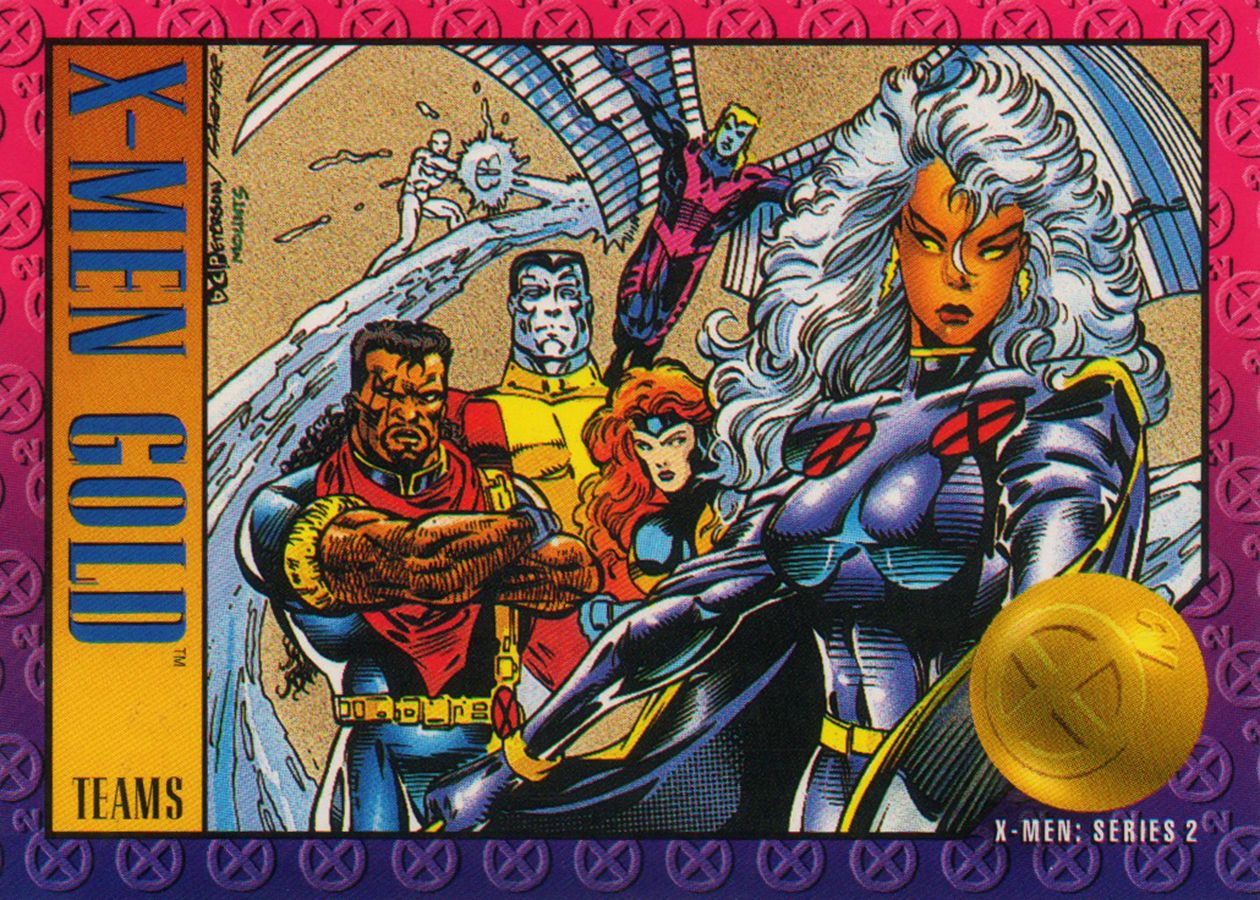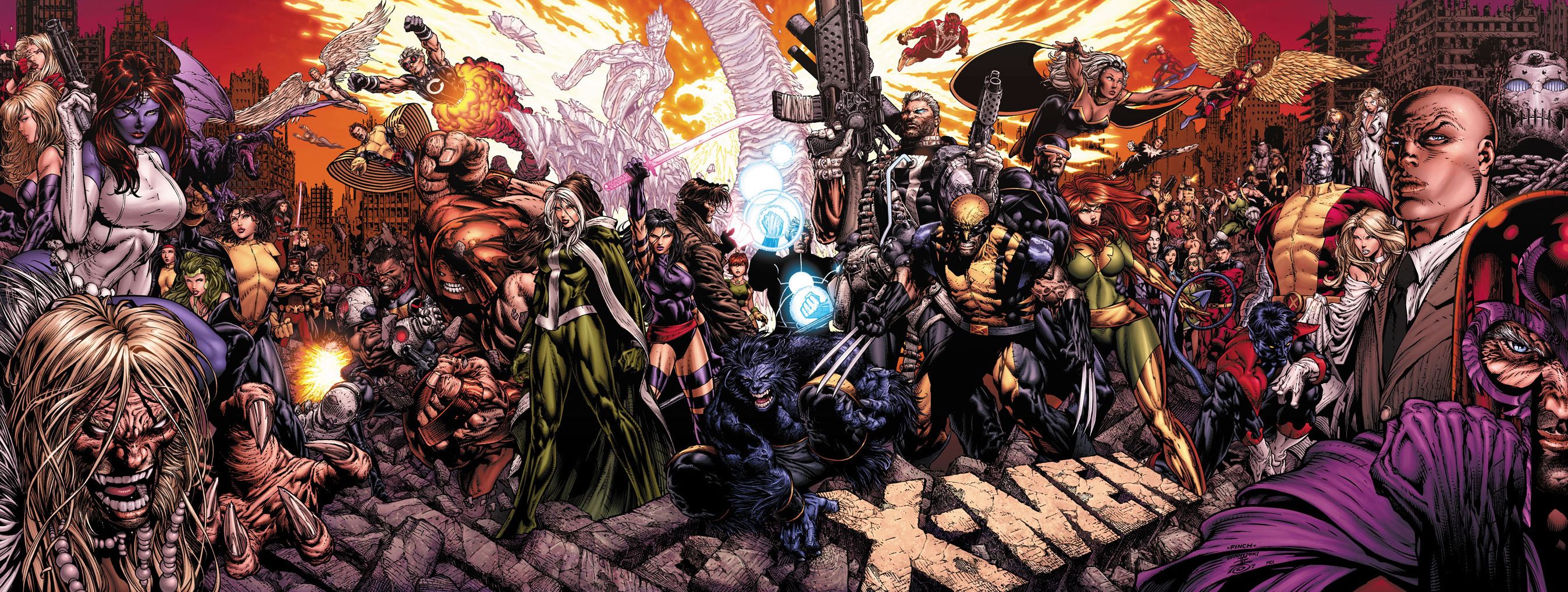If you're a '90s X-Men fan, odds are the blue and gold color combination conjures up a lot of nostalgia for you. That's partly why the recent announcement of two X-Men team books branded with those very colors caused so many X-fans to pump their fists in excitement. "X-Men Blue" and "X-Men Gold" aren't just color-coded team books, they're a shout out to one very specific -- and very popular -- time in X-Men history.
RELATED: Marvel Announces Two X-Men Team Books
It's a time in history that took a long time to get to, and it's a time in history that also hasn't been referenced in a long while, too. So while we don't yet know the creative teams or the rosters of the "Blue" and "Gold" books, those names alone are enough to get fans pumped up for whatever ResurrXion has in store for the X-Men line. And if you're scratching your head wondering what all the fuss is about, then CBR has compiled a history of the blue and gold designations -- a history that, from one point of view, goes all the way back to 1975.
A Giant-Sized Problem
The X-Mansion has been home to dozens -- if not hundreds -- of mutants over the course of the X-Men's 50 year history. For the first decade they were around, though, the X-Men's roster was surprisingly stable and uncharacteristically small. For much of "X-Men's" initial run in the 1960s, the team consisted of five mutants: Cyclops, Marvel Girl (Jean Grey), Angel, Iceman and Beast. Professor X served as their mentor, Mimic joined for an issue or two, and they were occasionally assisted by Havok and Polaris. The team never reached double digits when it came to members.
That all changed in 1975 with "Giant-Size X-Men" #1. At that point in the '70s, new issues of "X-Men" had been canceled and the series instead existed below the radar as a bimonthly reprint series. "Giant-Size X-Men" served as a relaunch of the languishing franchise, and it came with an all-new, all-different roster of mutants. Wolverine, Storm, Nightcrawler, Colossus, Banshee, Sunfire and Thunderbird all joined the team, still led by Cyclops. Their mission: travel to the deadly island Krakoa to rescue the rest of the kidnapped X-Men (Angel, Iceman, Marvel Girl, Havok and Polaris). That issue ended with more X-Men than ever, all crowded in the Stratojet's cokcpit. Angel asked a question that would be asked again later in the franchise's run: "What are we going to do with thirteen X-Men?"
This would have been a great time to launch two X-Men books -- were the franchise even remotely popular in 1975. The relaunch was successful enough to make all-new "X-Men" issues, but only every other month. Instead of launching two X-Books in 1975, half of these characters were written out of the restarted series. The hotheaded Sunfire stormed off, Havok and Polaris went back to their studies, Iceman and Angel moved out and Thunderbird was killed in action on the new team's very next mission. Marvel Girl stepped away for a brief period of time, but her relationship with Cyclops kept her in the team's orbit and soon pulled her fully back into the team as Phoenix.
X-Tended Family
The X-Men would function as one lone, lean superhero team for the rest of the '70s. The franchise entered the '80s more successful than ever, and a spinoff book was given the go-ahead by Marvel. But instead of launching a second "X-Men" series starring former X-members, a series ("New Mutants," seen above) launched and focused on a group of all-new teenage students. "Uncanny X-Men" continued alongside "New Mutants," with the latter serving as the teenage counterpart to the former.
The idea of a spinoff series starring ex-X-Men did come to pass in 1986 -- although once again, it didn't go by the name "X-Men." The book was instead titled "X-Factor" and it reunited the original five X-Men (Cyclops, Jean Grey, Iceman, Angel and Beast) as they had all, at one point or another, departed the flagship X-Men series. Another team book, the U.K.-based "Excalibur," launched in 1988 and starred a trio of X-Men (Nightcrawler, Kitty Pryde and Rachel Summers) with a pair of Marvel UK heroes (Meggan and Captain Britain).
While the X-line grew considerably in the '80s, the books themselves moved apart from each other. "Uncanny X-Men" starred a slowly rotating cast of characters as heroes were added to and written out of the book; by the late '80s, an entirely new roster (Storm, Wolverine, Colossus, Rogue, Dazzler, Longshot, Psylocke and Havok) had taken the lead. The New Mutants evolved from students to their own independent band of adventuring superheroes, while X-Factor had become public figures in Manhattan (when they weren't busy having adventures on other planets). "Excalibur" was possibly the furthest removed from the rest of the line, as they were not only stationed across an ocean but usually also in another time or dimension. This lack of unity culminated with 1989's "Uncanny X-Men" #251 when, well, the X-Men just plain broke up.
At this time, another team of leftover X-Men actually did form -- albeit within the pages of "Uncanny X-Men." And since they unknowingly formed right when the main X-Men team dissolved, there was still only one team of active X-Men. This team, comprised of mutants and humans stationed in the mutant research facility on Muir Island off the coast of Scotland, debuted in "Uncanny X-Men" #254.
This team -- which included members like Banshee, Polaris, Siryn, Multiple Man, Strong Guy and Forge among others -- would play a part in the events that led directly to the creation of the Blue and Gold teams.
Road To Blue & Gold
Following the main team's dissolution in "Uncanny" #251, "Uncanny X-Men" became a quasi-anthology series as it followed heroes that had previously been X-Men as they entered new phases of their lives. The team would remain broken up until 1990's "Uncanny X-Men" #270, when the events of the "X-Tinction Agenda" threw all of the mutant teams (minus Excalibur) together to fight the bigoted cyborg Cameron Hodge.
Following that event, "Uncanny X-Men" #273 -- an issue titled "Too Many Mutants" -- sorted through the pile of mutants and selected a unified team of X-Men. That lineup of Storm, Wolverine, Psylocke, Jubilee, Gambit, Forge and Banshee also wore blue and gold jumpsuits, reminiscent of the original X-Men uniforms (which were colored yellow/black or yellow/blue depending on the art team). But this team, despite being the most cohesive lineup seen in a year, wouldn't last long. The X-Men were headed for another major shakeup as they entered the Blue/Gold era.
1991's "Muir Island Saga" brought a lot of mutants together to fight the influence of the master manipulator known as the Shadow King. When the dust cleared on that battle, the new X-Men team was standing side by side with X-Factor and the hodgpodge team of Muir Island X-Men. The ranks of the X-men had once again swollen, leaving Professor X to ask in 1991's "X-Factor" #70, "What am I going to do with fourteen X-Men?"
Because roll calls are fun, the heroes pictured above are: Professor X and Beast (inset); Strong Guy (back row); Forge, Rogue, Colossus, Gambit, Polaris and Jubilee (middle); and Wolverine (crouched up front, like always). Not pictured but also in Xavier's count: Jean Grey, Cyclops, Iceman, Archangel, Storm and Multiple Man. And yep, that's actually fifteen X-Men and Xavier.
For the first time ever, 16 years after it was originally asked, the answer to the frequently asked question of what to do with so many X-Men actually involved creating a second team of X-Men!
Blue & Gold Era
Fall 1991's "Mutant Genesis" initiative saw sweeping changes made to the X-Men line. The New Mutants, now under the tutleage of the militaristic Cable, cut ties with the X-Men and became X-Force. Havok and Polaris took control of "X-Factor" as it transitioned into a government-sponsored super-team starring a number of lesser-known mutants (Multiple Man, Strong Guy, Wolfsbane). Since the original X-Men, the previous stars of "X-Factor," returned to the flagship series, a new X-Men book was launched to accommodate the larger-than-ever roster.
A new series, simply titled "X-Men," would star the Blue team while "Uncanny X-Men" would feature the Gold. "X-Men" #1 by Chris Claremont and Jim Lee introduced the Blue team, one comprised of the team's newer and rougher characters, all led by Cyclops. X-Men Blue consisted of Cyclops, Beast, Wolverine, Rogue, Psylocke and Gambit. Their inaugural mission put them up against Magneto and his Acolytes.
"Uncanny X-Men" #281 by Whilce Portacio, Jim Lee and John Byrne introduced the Gold team, a more experienced unit featuring more X-Men from the '60s and '70s. The Gold team, led by Storm, consisted of Jean Grey, Iceman, Archangel and Colossus. They kicked off their run by battling the time-traveling criminal Fitzroy and a fleet of Sentinels.
While all eleven X-Men lived at the X-Mansion, these two teams operated independently and went on separate missions. The Gold team fought the mystical Triumvirate while the Blue team battled the Russian super-soldier Omega Red. Storm's team dealt with Colossus' reality-warping brother and the Morlocks while Cyclops' X-Men traveled to New Orleans to fight assassins, thieves and aliens. Both teams even picked up new members: mallrat-turned-hero Jubilee joined the Blue team in "X-Men" #4 and the time-traveling cop Bishop enlisted with Gold in "Uncanny" #287. Psylocke's quasi-body double Revanche (it is a very long story -- much longer than we have time for today) also joined the Blue team for a brief period starting in "X-Men" #21.
Starting in 1993, the teams started to borrow members for specific missions. Colossus accompanied the Blue team for a mission in Russia in "X-Men" #17, and Gambit, Wolverine and Cyclops teamed up with the Gold team for battles against Magneto's Acolytes in "Uncanny" #298 and #300. As happened before, crossovers started to blur the lines between X-teams, this time affecting Blue and Gold. Colossus left the X-Men during the "Fatal Attractions" event, and Wolverine was nearly killed after Magneto ripped the adamantium out of his body. Coming out of "Fatal Attractions," members of each team started to appear in the other book; Jean Grey fought Sabretooth in "X-Men" while Rogue and later Gambit teamed up with the Gold team to fight the alien race known as the Phalanx. When 1994 hit, the only thing that really differentiated "Uncanny" and "X-Men" was the corner box art on each series' cover -- and those would soon change, too.
They're All X-Men
After "The Phalanx Covenant," 1994's big crossover event, the Blue and Gold teams were quietly retired. Three years after the two teams were instated, "X-Men" and "Uncanny X-Men" became two books starring one team with a dozen members. This era, wherein plot lines and characters bounced back and forth between the two flagship titles, kicked off with November 1994's "Uncanny X-Men" #318 and "X-Men" #38 and would last for four years. 1998's "Uncanny X-Men" #360 and "X-Men" #80 would pare down the roster to a manageable number -- but this eight-member team (Storm, Colossus, Wolverine, Nightcrawler, Kitty Pryde, Rogue, Gambit and Marrow) starred in both X-Men books.
As the books moved forward, it became clear that the color designations had been left behind in the early '90s. More and more series started to include "X-Men" in the title, but the teams themselves were separated by adjectives and not colors. "New X-Men," "Astonishing X-Men," "X-Treme X-Men," "Young X-Men," "Wolverine and the X-Men," "All-New X-Men," "X-Men Legacy," "Extraordinary X-Men" and "Amazing X-Men" were all added to the line, usually in addition to "Uncanny X-Men" and "X-Men." Most of the time, all of these teams would refer to themselves as just "the X-Men." Whereas there was a resistance to having multiple X-Men teams in the '70s and '80s, that definitely went away as the '90s turned into the '00s.
That's definitely the era we live in right now, with the teams in "Extraordinary X-Men," "Uncanny X-Men" and "All-New X-Men" all equally calling themselves just "the X-Men." Storm's Limbo-based team is just as much the X-Men as Magneto's strikeforce and the road-tripping teen team. Now, as part of ResurrXion, the line is most likely going back to a naming structure last seen 22 years ago. Come spring 2017, there will once again be an X-Men Blue and an X-Men Gold.

